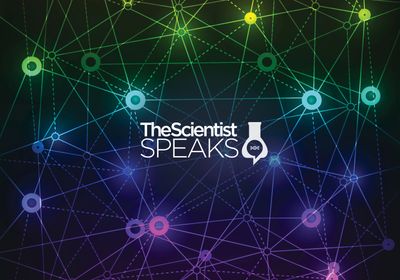ABOVE: © ISTOCK.COM, baranozdemir
For long COVID sufferers, feelings of fatigue, breathing difficulties, and other debilitating symptoms persist for weeks or months after infection with SARS-CoV-2. According to one estimate, up to 60 percent of people who’ve had COVID-19 still have symptoms six months later, and the condition can arise even after mild cases of the respiratory disease. The reason why remains largely a mystery.
Two new studies are finally providing some answers. The first, published in Cell on Monday (January 24), followed 200 patients over two to three months following their COVID-19 diagnoses. The researchers determined four biological factors that they say are associated with whether a person will develop long COVID. These factors, the researchers suggest, could point to ways to prevent or treat long COVID—also known as post-acute sequelae of COVID-19 (PASC)—if identified early in an infection.
The first factor is the level of RNA in the blood at diagnosis, which the authors say correlates with infection severity. The second is the presence of autoantibodies—those that attack the patient’s own body. Third is the reactivation of the Epstein-Barr virus, a common, relatively harmless virus that most people are infected with and recover from early in life. The last is Type 2 diabetes.
See “When the Immune Response Makes COVID-19 Worse”
“I think this research stresses the importance of doing measurements early in the disease course to figure out how to treat patients, even if we don’t really know how we’re going to use all that information yet,” coauthor Jim Heath, an infectious disease specialist and president of the Institute for Systems Biology, a nonprofit biomedical research organization in Seattle, tells The New York Times.
The study looked at a list of 20 long COVID symptoms, including fatigue, brain fog, and shortness of breath. Of patients experiencing three or more symptoms, 95 percent had one or more of the identified risk factors. The most influential factor seemed to be autoantibodies, Heath tells the Times.
See “Mechanisms of Long COVID Remain Unknown but Data Are Rolling In”
The study authors and outside experts caution that significantly more research is needed to verify the study’s conclusions, especially since the study only followed a relatively small cohort and many of the patients suffered from severe infections, meaning they may not be representative of people who’ve recovered from COVID-19 more generally.
“It’s the first real solid attempt to come up with some biologic mechanisms for long Covid,” Steven Deeks, a professor of medicine at the University of California, San Francisco, who was not involved in the study, tells the Times.
In another study, this one published yesterday in Nature Communications, researchers found an antibody signature associated with long-term COVID-19 symptoms. The study initially studied blood samples from a cohort of 175 people diagnosed with SARS-CoV-2 infection and 40 healthy controls. The researchers analyzed the blood antibody levels during infection, then followed 134 of the participants for a year afterward, collecting additional blood samples at 6 and 12 months and documenting their symptoms.
They found that, after infection, two types of antibodies begin to circulate through the blood: IgM and IgG. Initially, IgM levels increase quickly, helping to fight infection. IgG levels increase later, providing long-term immunity. When the researchers compared antibody levels in the blood samples, they found that patients who developed long COVID tended to have lower levels of IgM at the start of infection and lower levels of an antibody called IgG3 six and 12 months after infection than did infected people who didn’t develop the condition.
The researchers found that these antibody levels, along with other factors including asthma and the age of the participant, could be tabulated to assess whether someone had a low, moderate, or high risk of developing long COVID. The authors then validated their score calculation technique on a cohort of 395 individuals diagnosed with SARS-CoV-2 infection who they followed for six months after diagnosis and found the scores were helpful predictors.
“Overall, we think that our findings and identification of an immunoglobulin signature will help early identification of patients that are at increased risk of developing long Covid, which in turn will facilitate research, understanding, and ultimately targeted treatments for long Covid,” says study coauthor Onur Boyman, an immunologist and professor at the University Hospital Zurich, to The Guardian.
Although the antibody test cannot predict a person’s risk of long Covid before they are infected, Carlo Cervia, the first author on the study, tells the Guardian that people with asthma and low IgM and IgG3 levels before infection can assume they are at an increased risk for long COVID should they contract COVID-19.
“This is expected to improve care for long Covid patients as well as motivate high-risk groups, such as asthmatic patients, to get vaccinated and thus prevent long Covid,” Cervia says.
The authors of the Cell paper theorize that high levels of autoantibodies might also correlate with lower levels of antibodies to fight infection, possibly making patients more vulnerable to reinfection, Heath tells the Times. This might also corroborate the results of the team at University Hospital Zurich.
Two other recent studies both suggest that long COVID risk might be cut down after vaccination. One study performed in Israel on a cohort of 3,000 people and posted as a preprint found that the likelihood of developing long COVID symptoms was drastically reduced among people who were fully vaccinated before they became infected with SARS-CoV-2. The second, performed on a cohort of 6,000 people by the Office of National Statistics in the UK, saw the likelihood of long COVID reduced by 41 percent after vaccination.







